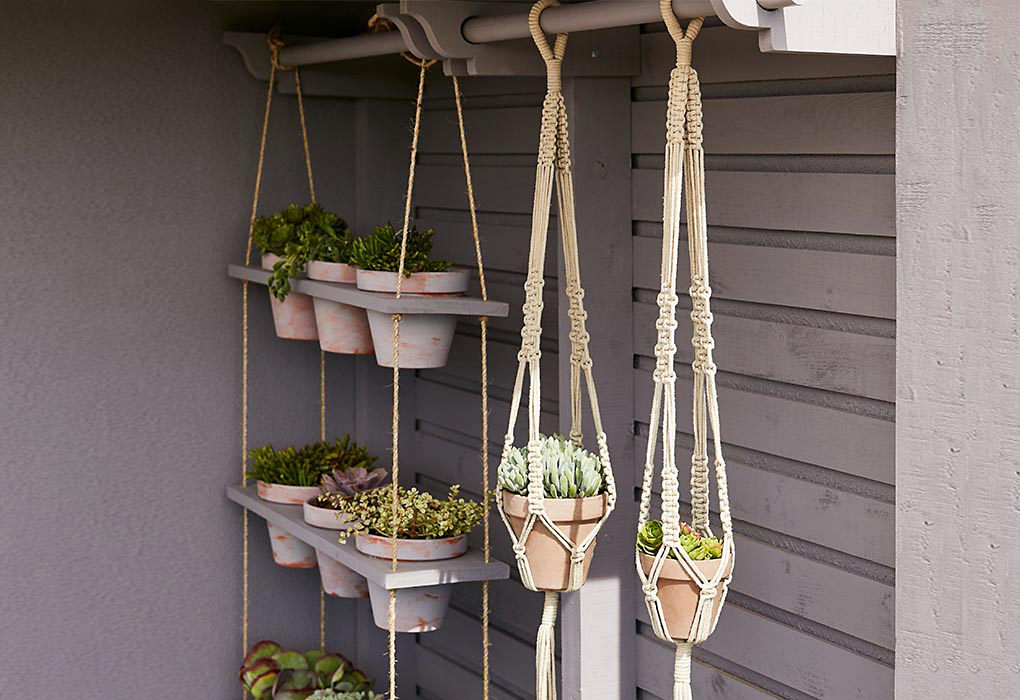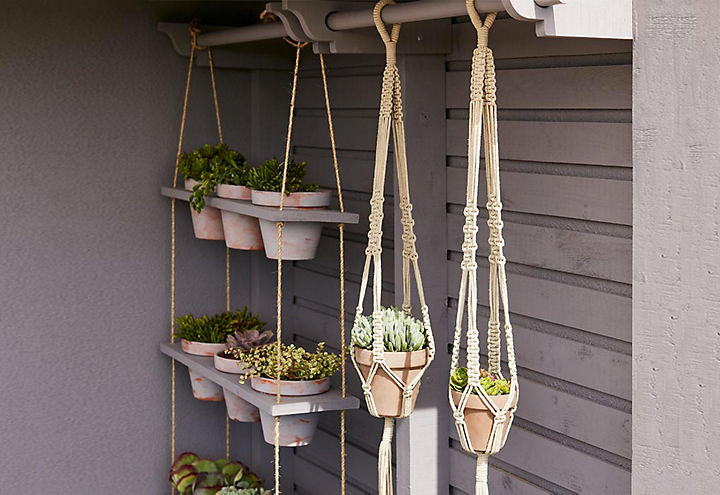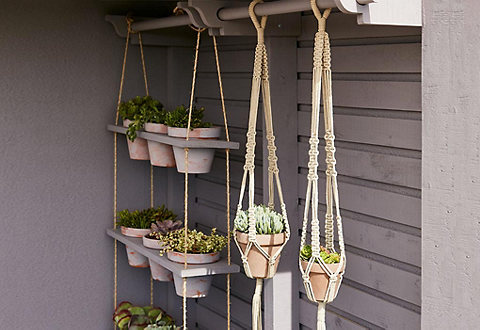Christmas clearance has landed! Click + Collect selected items in just one hour. Shop now >>
House plant buying guide
Top tips for choosing and caring for houseplants
Houseplants breathe life into our homes and colour into forgotten corners. They've had a bit of a resurgence in recent years, featuring in almost every styled interior you come across. You may have been inspired to add a pot or two to your own home already. With so many varieties, shapes and sizes, it's not hard to find a style to suit you and your lifestyle. Whether you choose trailing leaves for a hanging pot, a sculptural succulent or an air-purifying wonder plant, it's bound to give your room a lift. And it's not nearly as difficult to keep them happy and healthy as you may think.
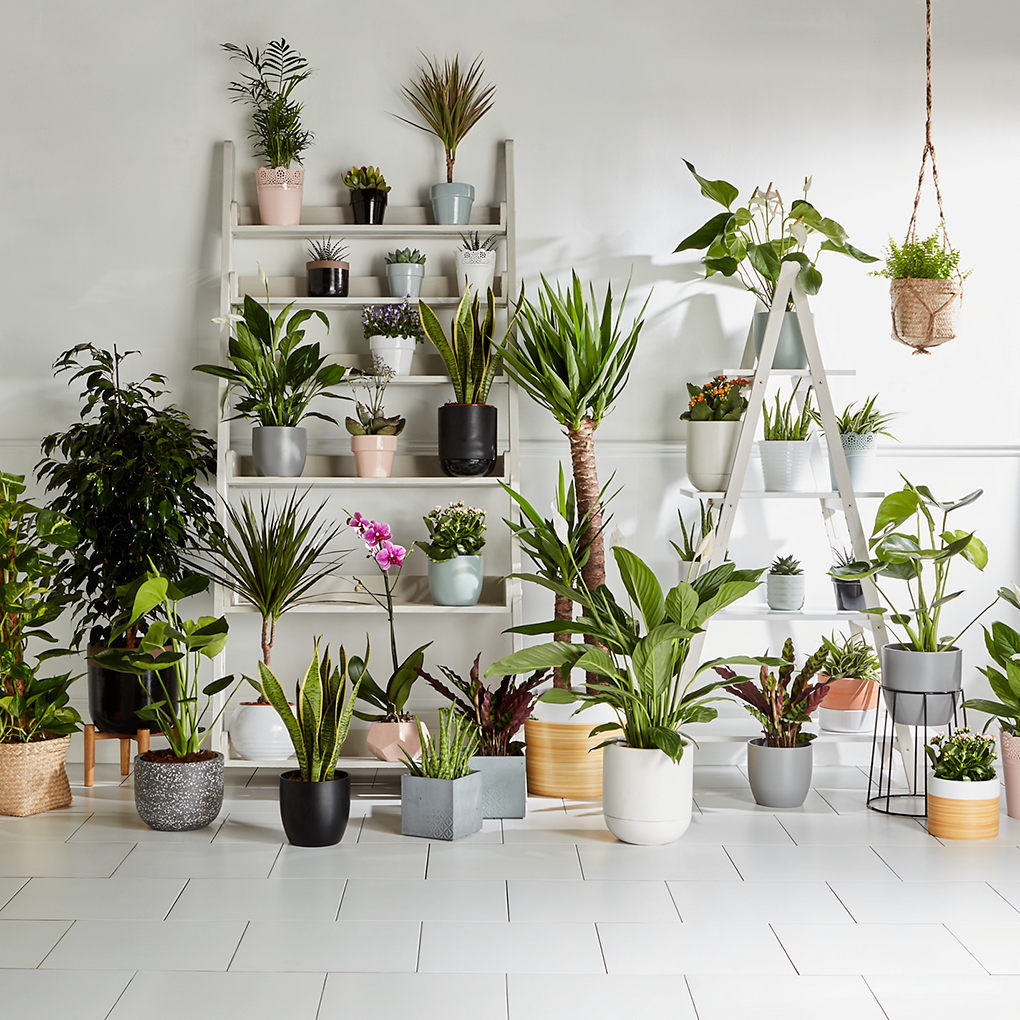

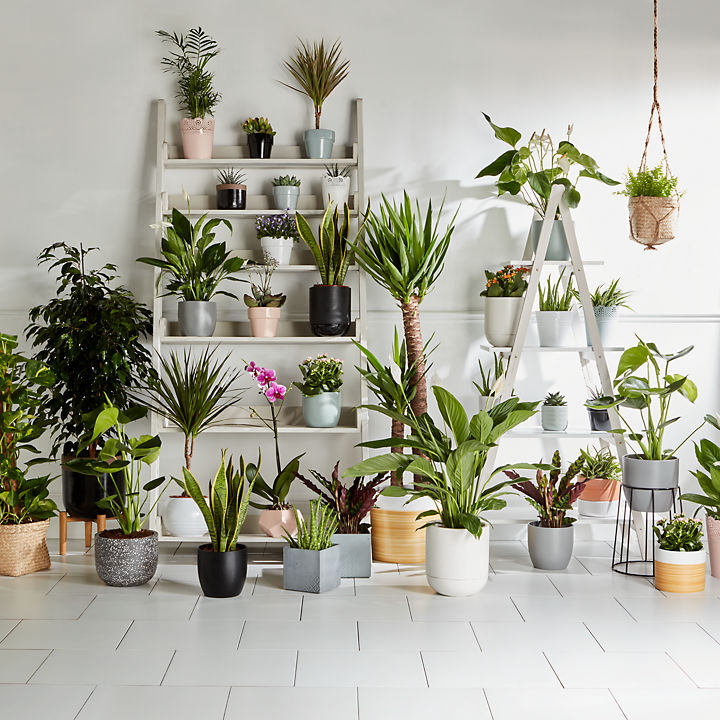
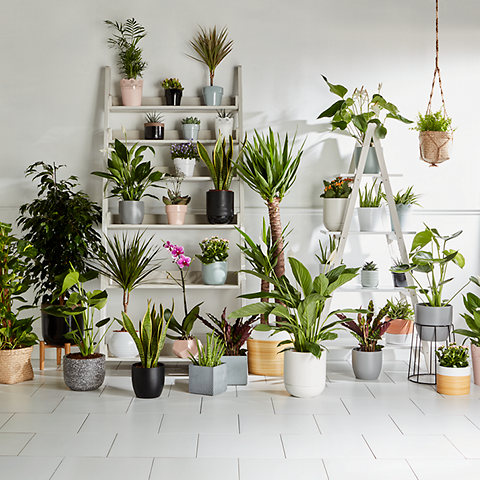
Plants really do make any indoor space feel more natural and welcoming. There are plenty of varieties that only need a little of your attention to thrive. What's more, houseplants can act as a natural air purifier for your home or office; in the process of photosynthesis plants gently cleanse the air around us, absorbing carbon dioxide and releasing oxygen during daylight hours.
We've pulled together some simple tips and advice to help you find the right houseplants and keep them happy and healthy.
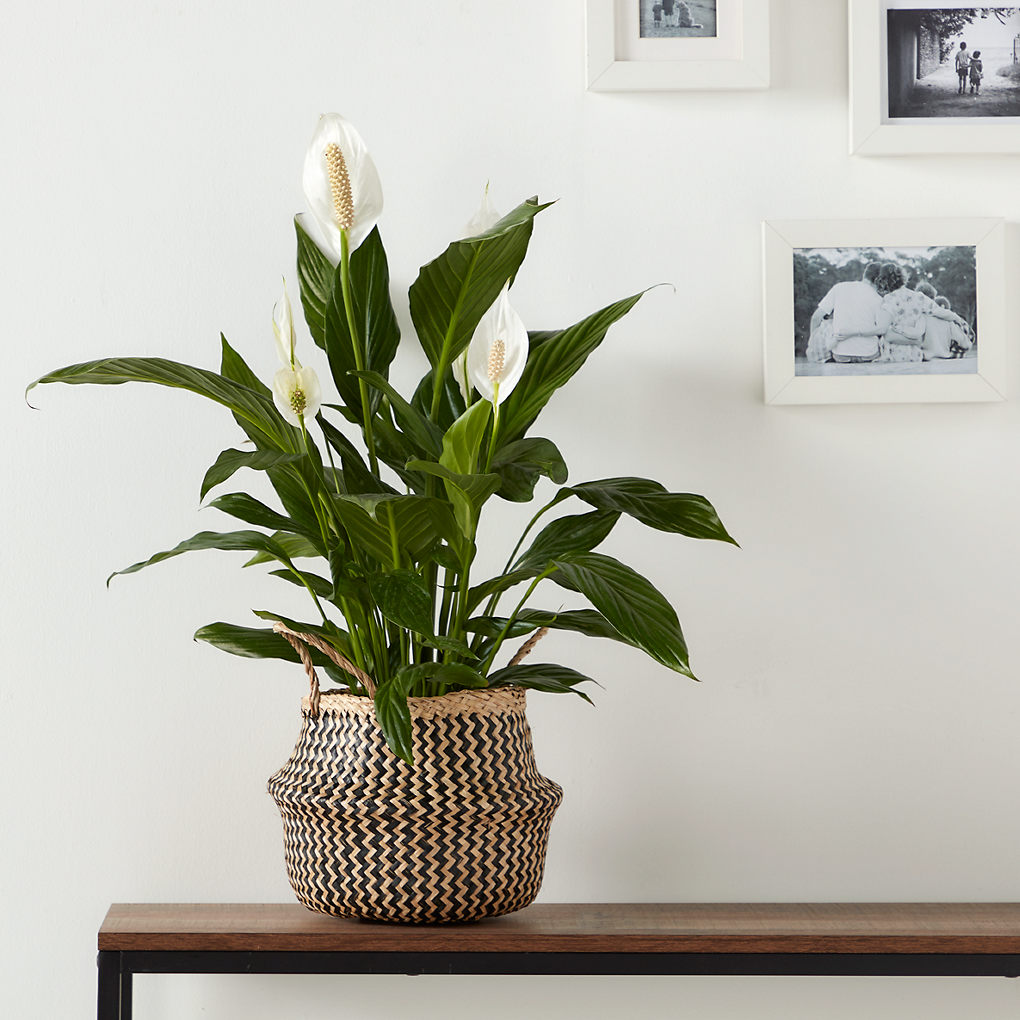

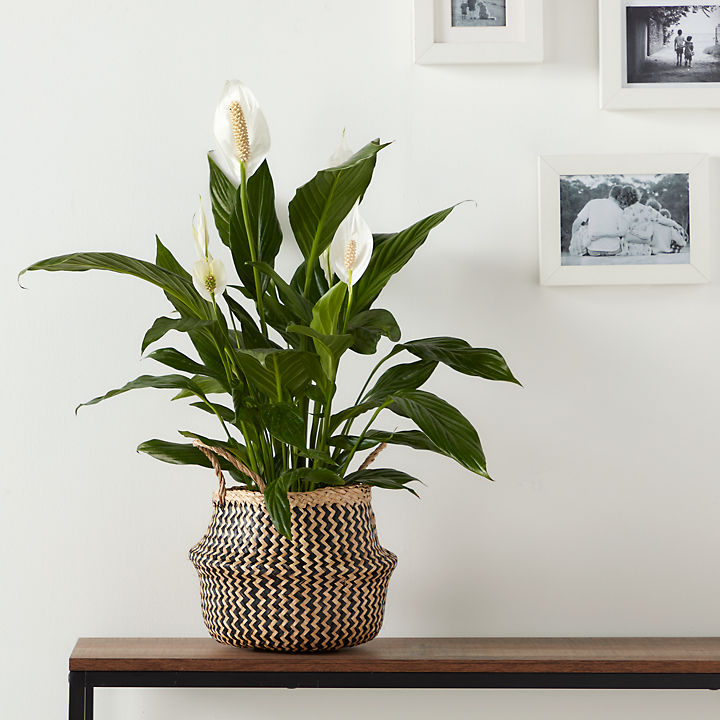
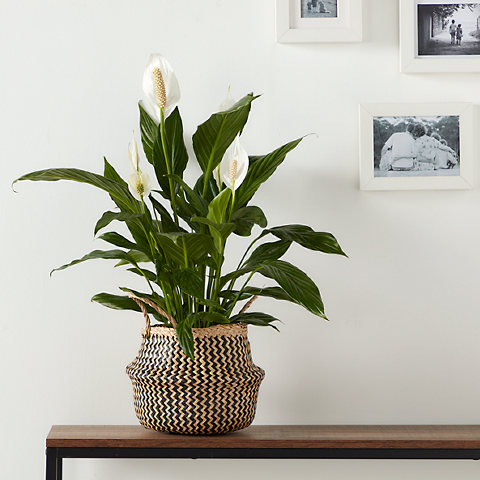
Some houseplants will need more care than others, so when choosing yours think about how much time you have to spare. The jasmine, for instance, will provide a wonderful perfume but does require a bit of looking after to maintain its shape.
For easy-care but stylish options, consider succulents such as cacti or aloe.
When selecting plants to buy, look for well-balanced, even growth and don't look twice at lopsided plants. Check that the leaves and stems are healthy and undamaged; remember also to look for signs of disease on the undersides of the leaves.
Below we’ve split out some of our most popular houseplants into groups to help you pick something perfect. For example, if you are looking for a showy, flowering plant, take a look at the flowering group.
Small foliage houseplants
Leafy greens look great against any backdrop, and the Dragon Tree is a striking choice. It takes little maintenance so it’s perfect for busy households.
The dragon tree can be encouraged to grow big and beautiful through repotting and feeding, to help its roots spread and branches to grow further. Don’t worry when the bottom leaves of your dragon plant shed, it just means the plant is growing well.
These tropical plants like warmth but avoid putting them too close to radiators as this can dry out the soil and prevent the plant from getting all the nutrients it needs to grow.
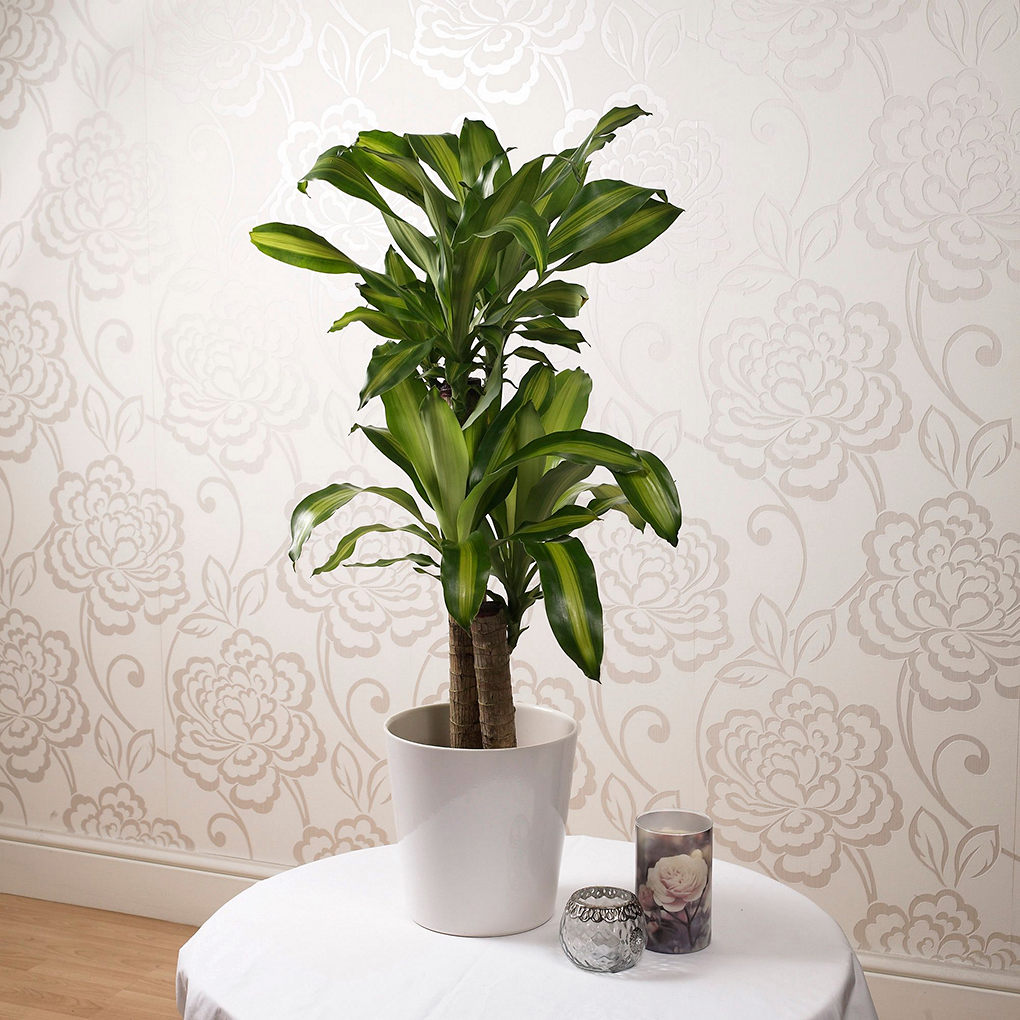

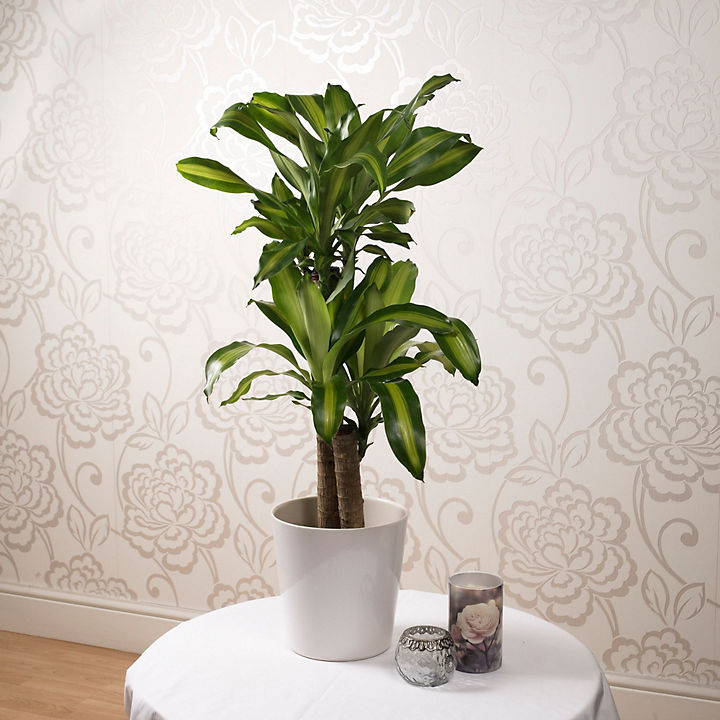
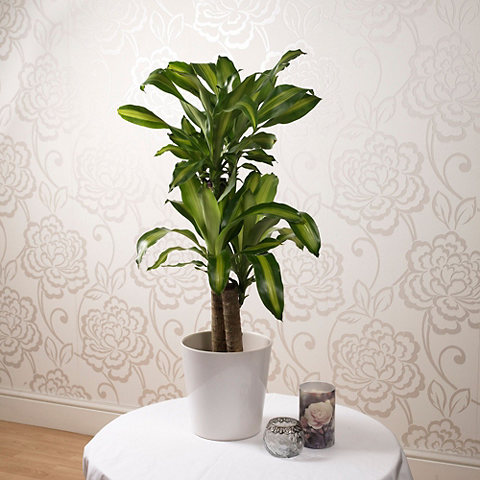
Spider plant
Spider plants are a popular and nearly indestructible indoor plant. Another good choice for the less green-fingered!
When well-watered and fed, it'll product broad, striped, grass-like foliage and throw out long white stems with white flowers.
They like to live in bright, natural light and well-drained soil. You can grow them in pots or containers with houseplant potting compost. Water them regularly with distilled or rainwater, as tap water can cause browning of the leaf tips.
Take a look at our other small foliage plants:
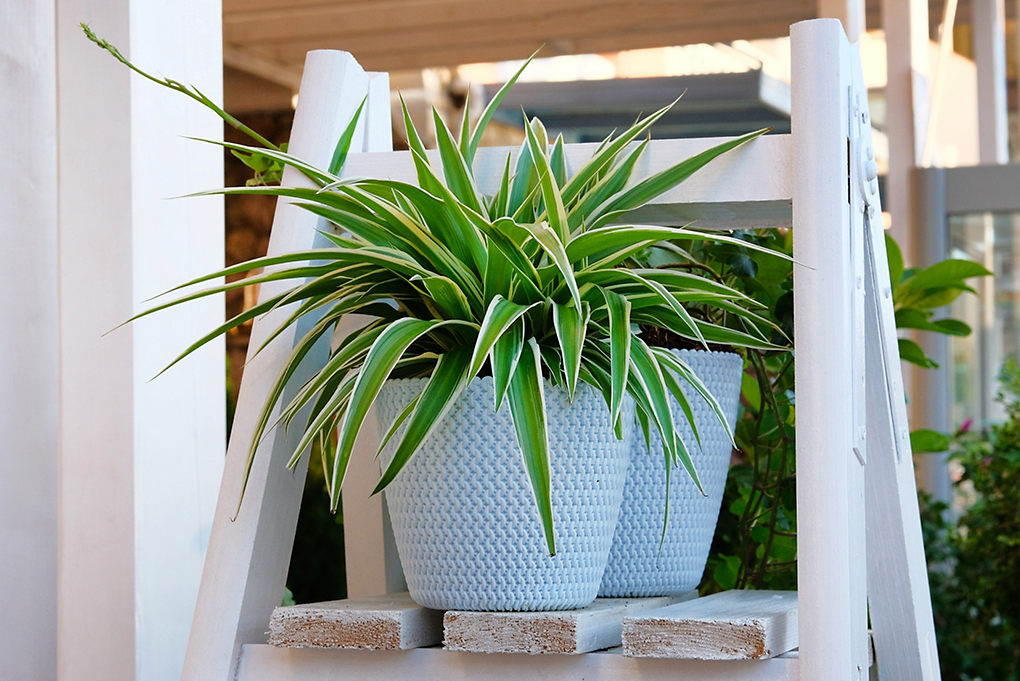

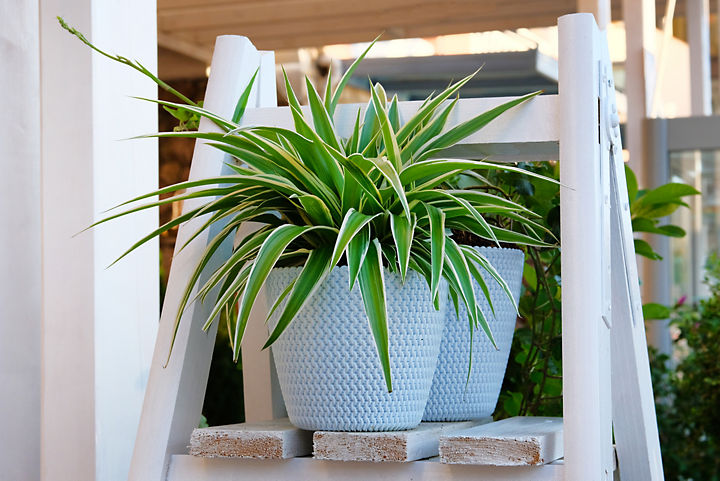
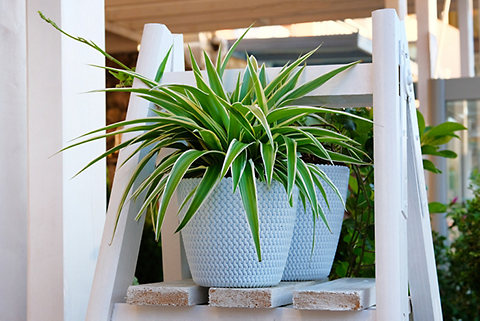
Medium foliage houseplants
Sansevieria - Mother in law's tongue
A plant that looks spectacular when grown well, it thrives outdoors in containers over the summer. The leaves are dark green with cream edges and silvery, horizontal stripes.
This houseplant grows best in partial or full shade and prefers moist but well-drained potting compost. Keep the compost damp but never allow it to stand in water. Feed with fertiliser every two weeks through the growing season and water less frequently in winter.
Take a look at some of our medium foliage plants:
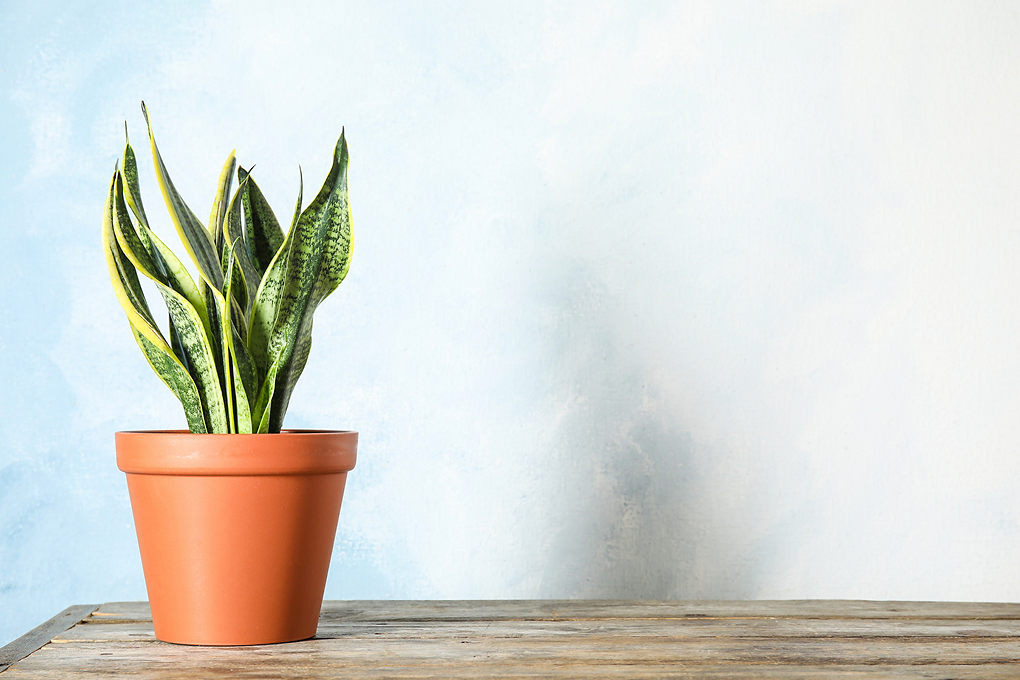

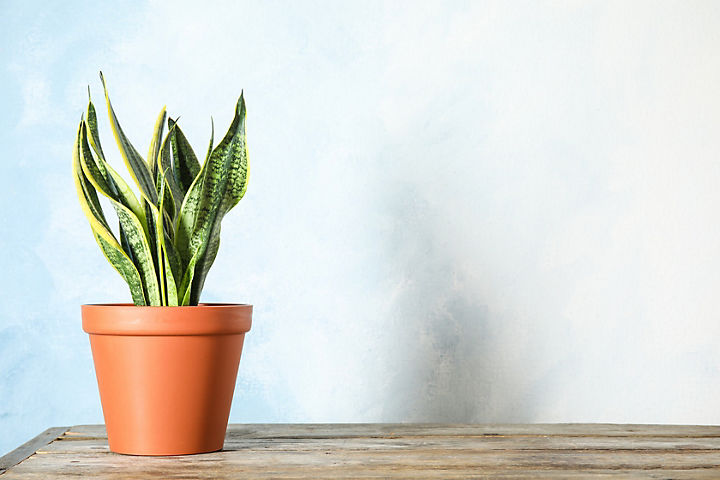
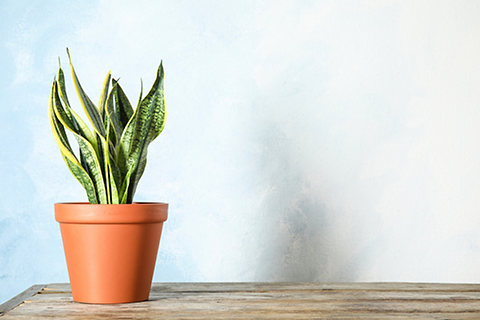
Large foliage houseplants
Reminiscent of their tropical origins, the palm brings a relaxed atmosphere to your home. Although they are unlikely to bloom indoors, palms will produce vibrant leaves without having to constantly water them.
If you have limited space, then you can manage them by keeping them in a smaller pot. If you want your palm to keep growing larger then annual re-potting will help.
Take a look at some of our large foliage plants:
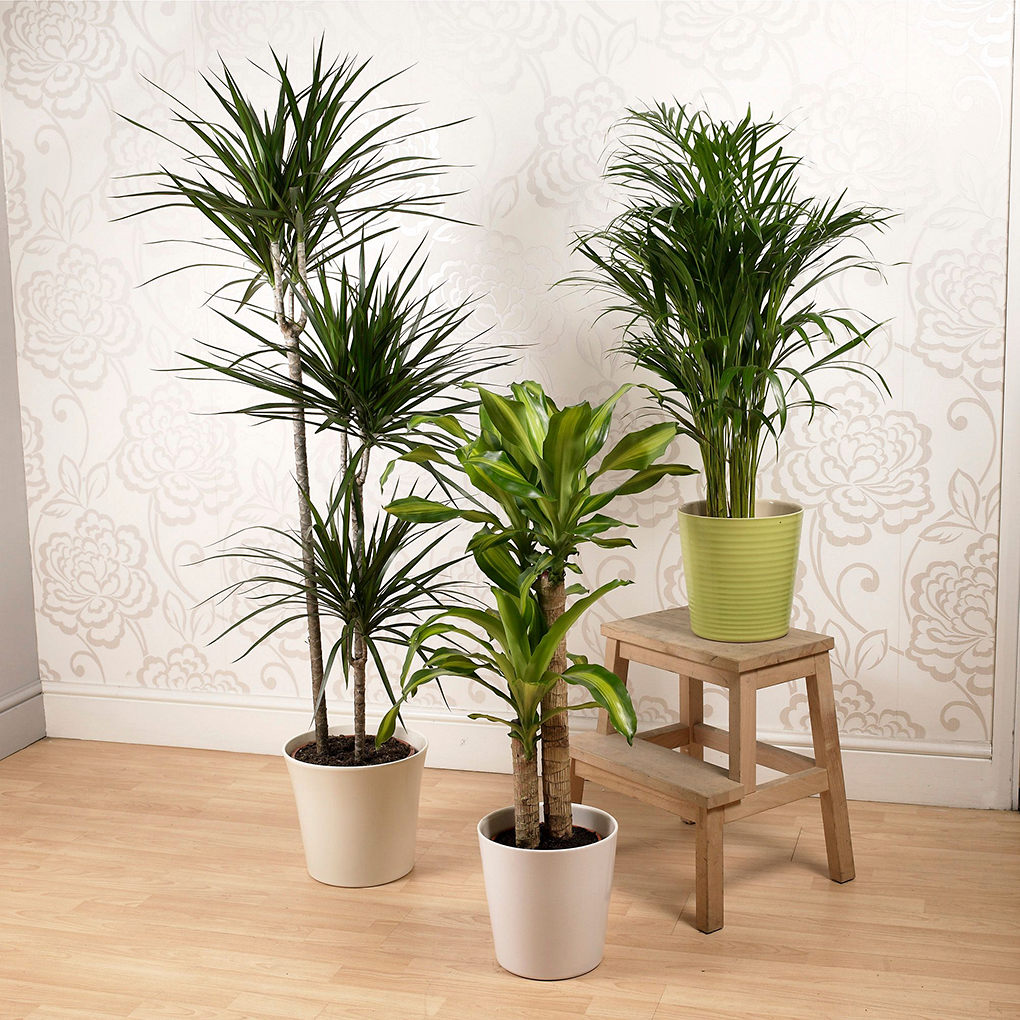

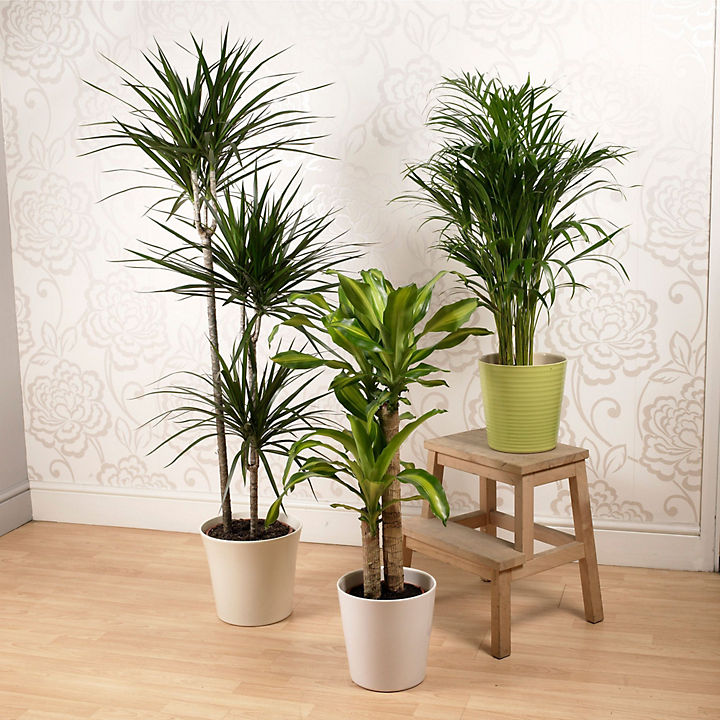
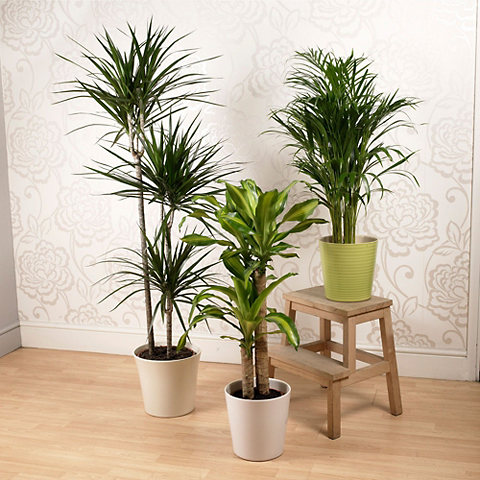
Flowering houseplants
These striking plants, also known as Closet Plants, are some of the most popular houseplants around. With beautifully crisp white blooms and dark green, waxy leaves, they are relatively easy to look after.
Peace Lilies love a spot that has indirect sunlight. It’s important to make sure it has a good supply of water every few days as they are very thirsty. An easy way to spot when they need more water is when their leaves start drooping. However, you shouldn’t let them stand in water as this can rot the roots and kill the lily. Moderation is key.
The growing seasons for Peace Lilies are spring and summer and if well cared for, they will bloom twice a year. Peace Lilies will often need repotting to a larger pot so that their roots can spread, encouraging the plant to grow even bigger.
Take a look at our other flowering plants:
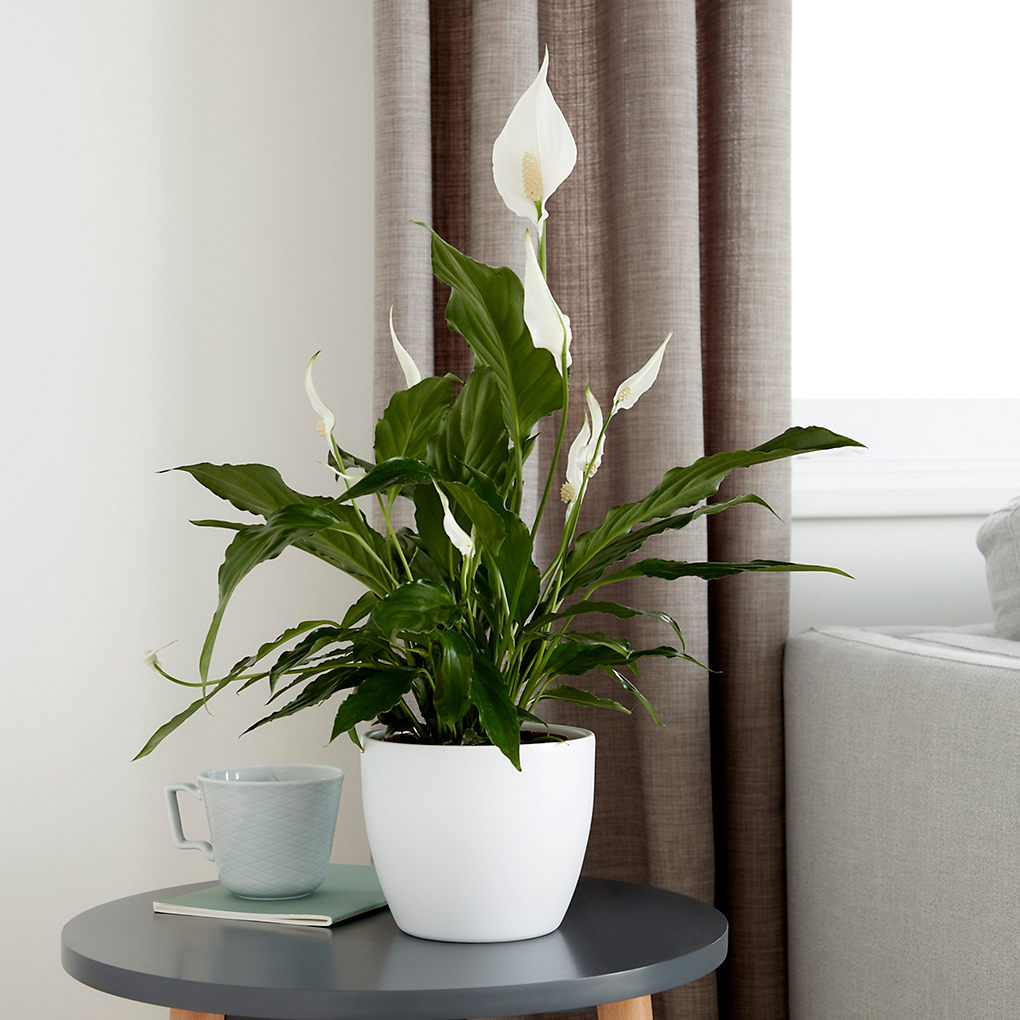

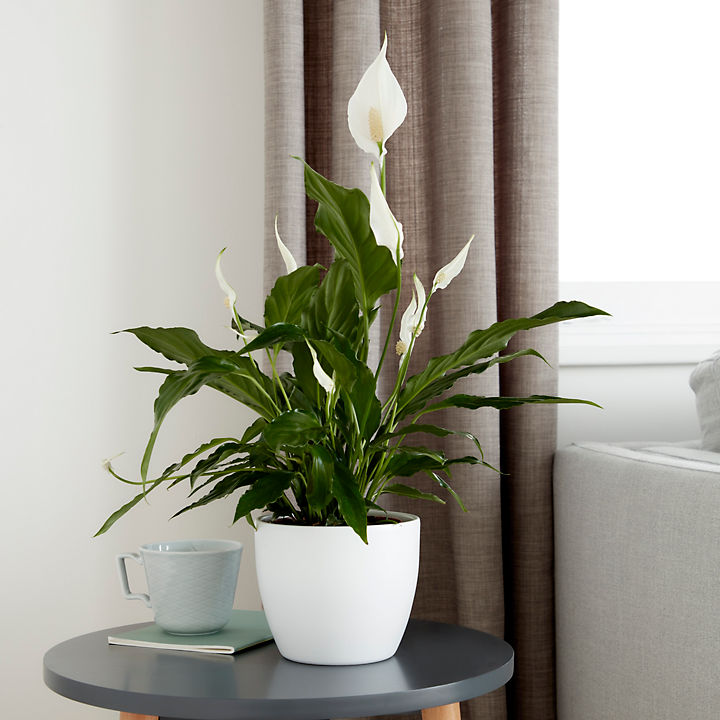
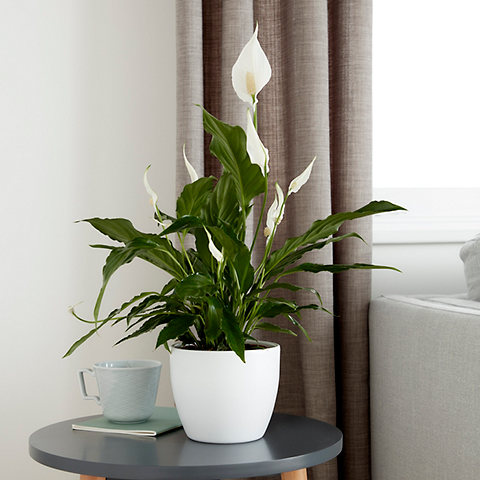
Specialist houseplants
Cacti plants are peppered with spines and prickles and come in a huge variety of shapes, sizes and colours. Try grouping three or four together to create a display.
Despite their hardy appearance, cacti still require nourishment and nutrients. As cacti come from a hot, dry climate with minimal rain, they can easily be drowned if they take on too much water. Spray the surface of the soil to keep it moist and let the water drain away before you water again.
It is important that cacti are able to get sunlight for at least part of the day, which is especially true for those cacti that sprout flowers.
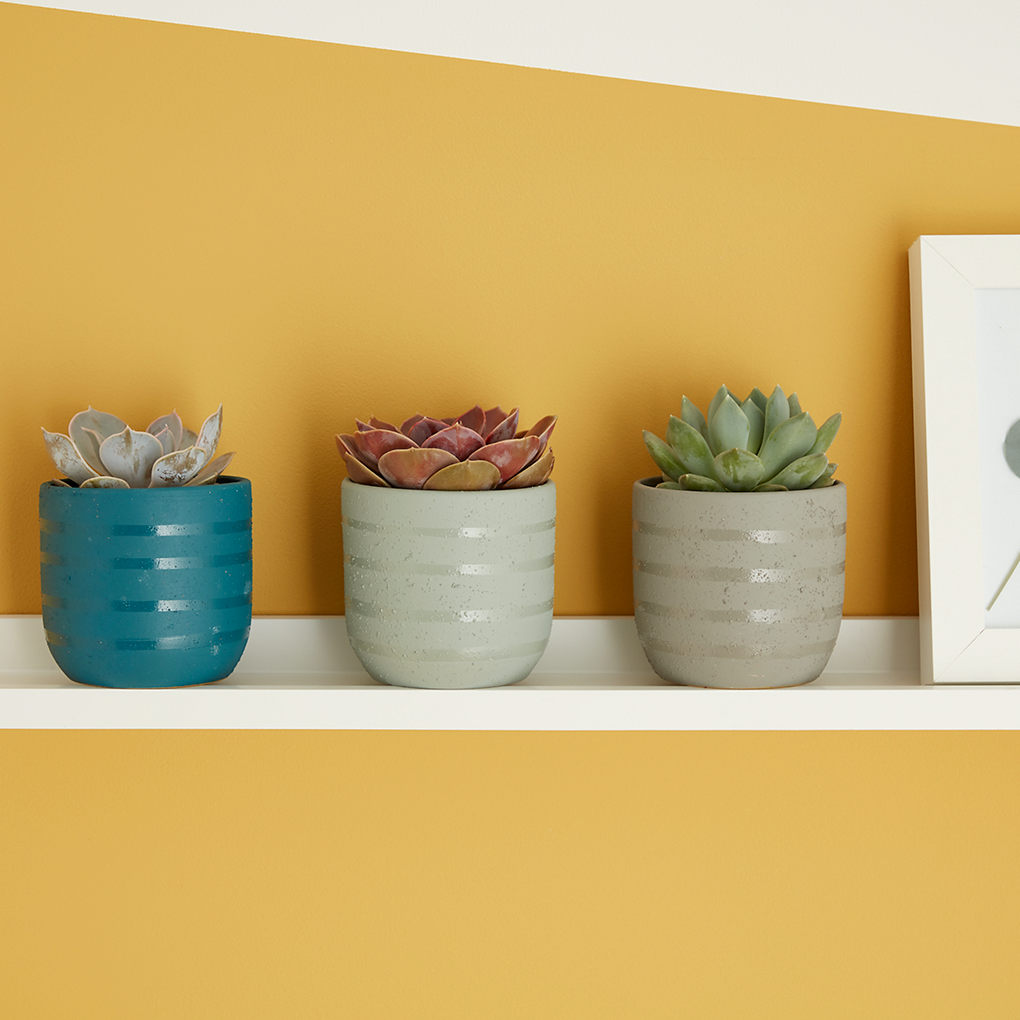

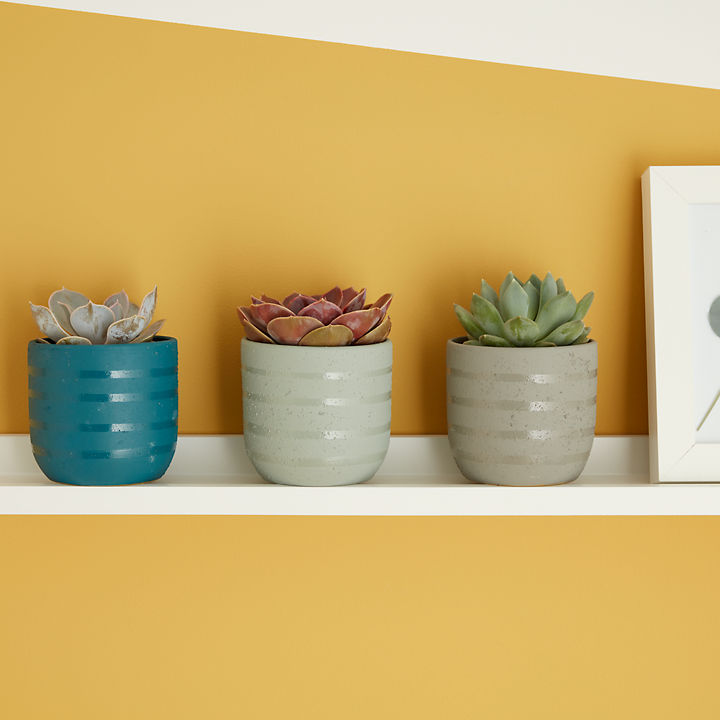
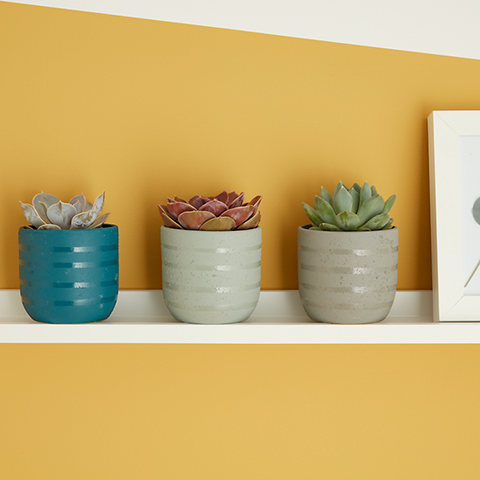
Originating from a warm, dry climate, a succulent plant has thick, fleshy leaves which retain the water.
Succulents thrive in warm, dry locations like window sills and only need watering when the soil gets dry.
Bear in mind that succulents can grow fairly large, so if growing different succulents in the same pot, it's worth spacing them a slight distance apart so the larger doesn't dwarf the smaller. Whilst greener varieties of the succulent plant family are suitable for indoor growth the purple species are more suited for outdoor life.
Both cacti and succulents are ideal plants for the novice grower, they don’t need lots of attention but still look great dotted around your home.
Take a look at some of our other specialist plants:
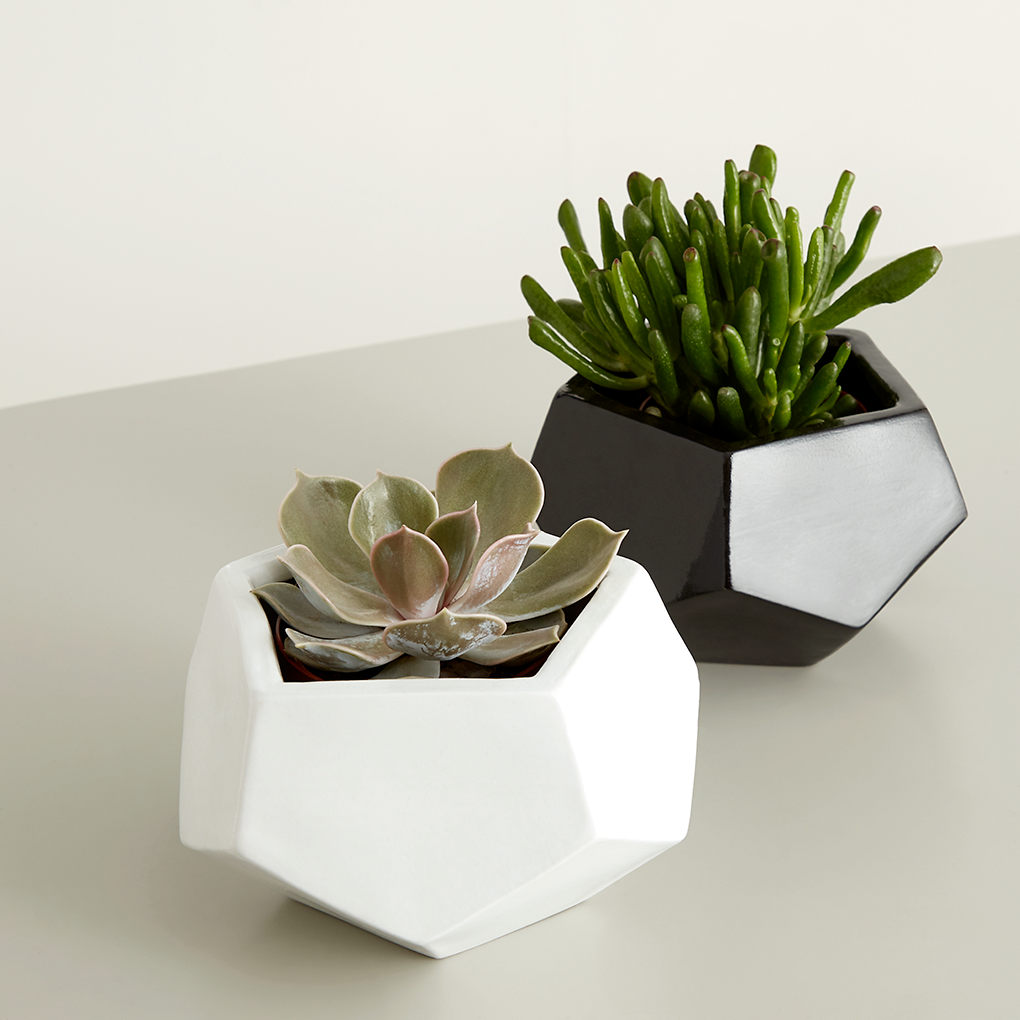

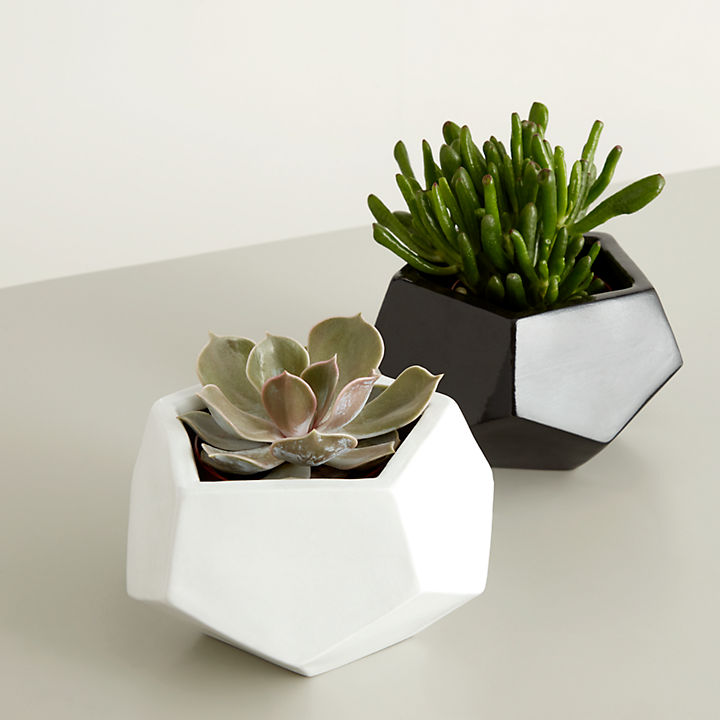
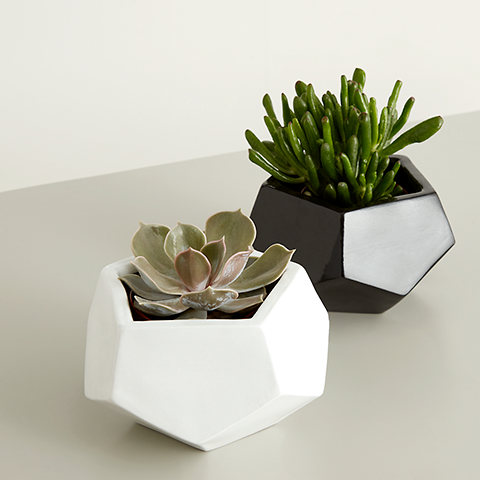
Orchids
These beautiful flowers are fairly easy to look after, and when in full bloom create a gorgeous focal point in your home.
Check the label for the orchid’s ideal location. They generally like bright, indirect light, for example near an east, west or shaded south window. Orchids also thrive with lots of fresh air and high humidity.
Maintaining nutrient levels is crucial for keeping them in a healthy condition. Orchids put a lot of energy into blooming, so it is good to give them a helping hand to keep the flowers vibrant and beautiful for longer. You can add a small amount of Orchid plant food to the water before pouring it in to encourage growth.
These plants naturally live with their roots on the side of trees. So, if you want to fully incorporate their natural lifestyle into your home, you can repot them in Orchid compost, which includes a specially blended mix of bark and Seramis clay granules.
When watering, keep the leaves and flowers dry and let the water (preferably rainwater) drain from the pot. This is why the compost is very open with good drainage.
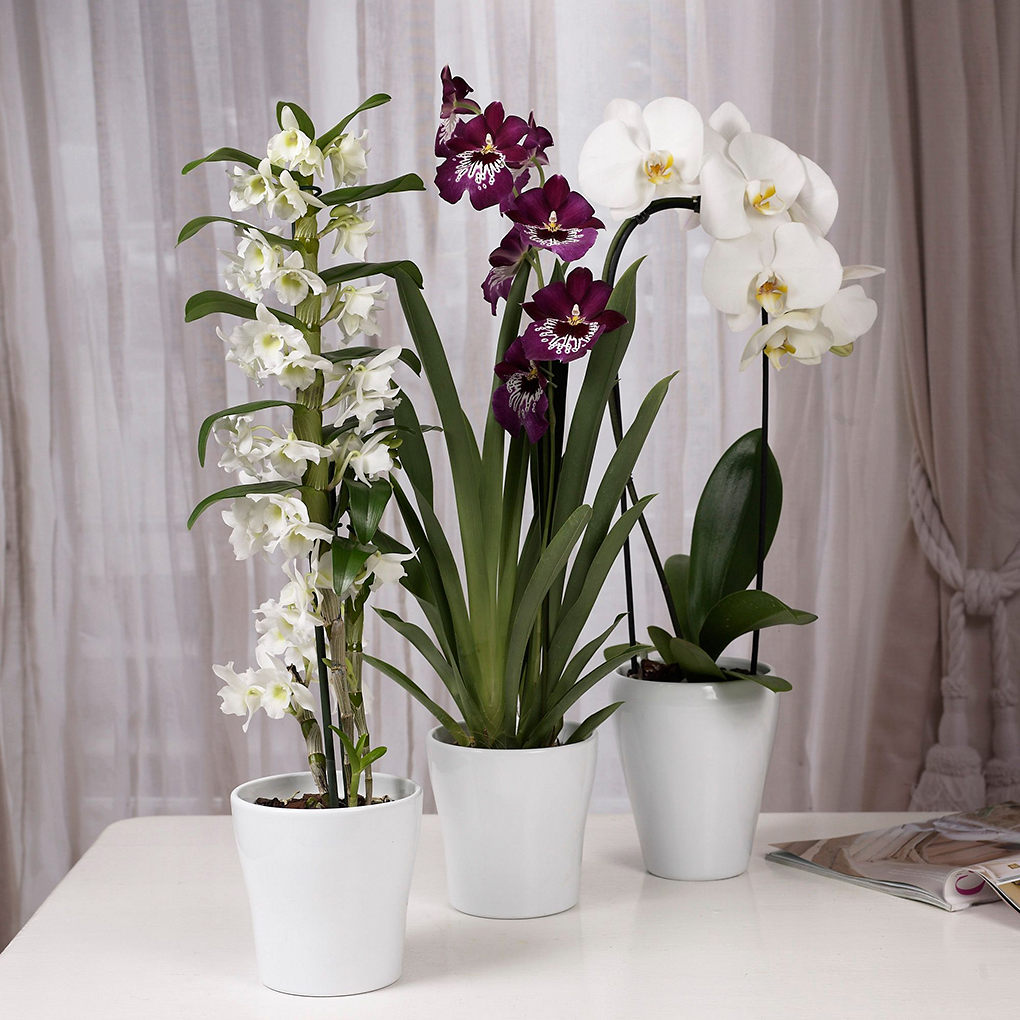


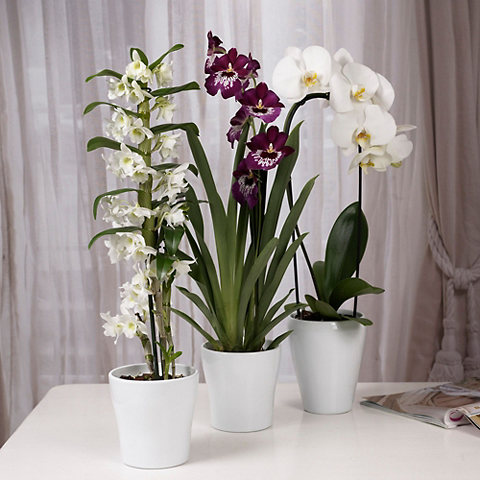
Citrus plants
Orange, Lemon and Lime citrus plants look and smell great, adding colour and a sweet citrus scent to the home. Some are ornamental, so you won’t be able to eat them, but they’ll still look amazing!
Citrus plants can be quite hungry, so use a specialist citrus potting compost when potting on. This compost can also be used to top-dress the plant every spring. Simply remove the top 4cm to 5cm of old compost and top up with fresh citrus potting compost. Use a feed high in nitrogen from April to October and a more balanced feed between November and March.
They can be kept outside during the summer months (June to September), but keep sheltered from cold winds or make sure they're brought in if temperatures dip below 7°C.
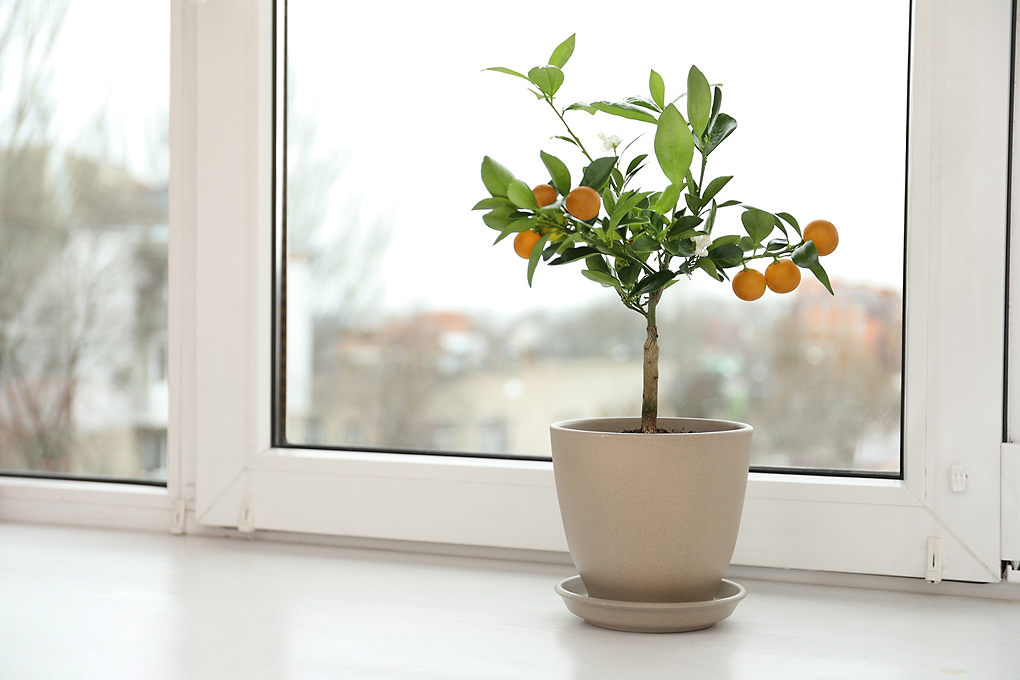


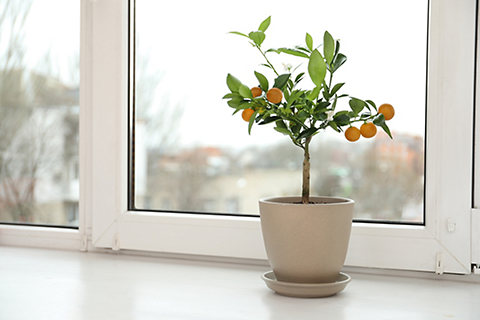
There are some general guidelines to follow when choosing a spot for your houseplants.
- Never put a plant directly above a radiator as the heat will quickly dry out the leaves and flowers.
- Place plants away from draughts – most plants prefer constant temperatures.
- Avoid direct sunlight. Most foliage plants thrive in bright but filtered light; strong sun will scorch the leaves. The exception to this is succulents such as Aloe Vera, which come from hotter climates than ours, and flowering houseplants, which require more light than leafier plants.
- If there is only one light source, remember to rotate your plants regularly or they will become lopsided and grow towards the light source.
- Do not leave plants on window sills behind curtains at night as it gets too cold.
Plants for the bathroom
The bathroom not only tends to be quite a shady room in many houses, but it is also prone to extremes in temperature, swinging between hot and steamy and cold and draughty. Surprisingly, however, there are many plants that thrive in these conditions.
India rubber plants and ferns give you lush, tropical foliage and will happily survive in most bathrooms.
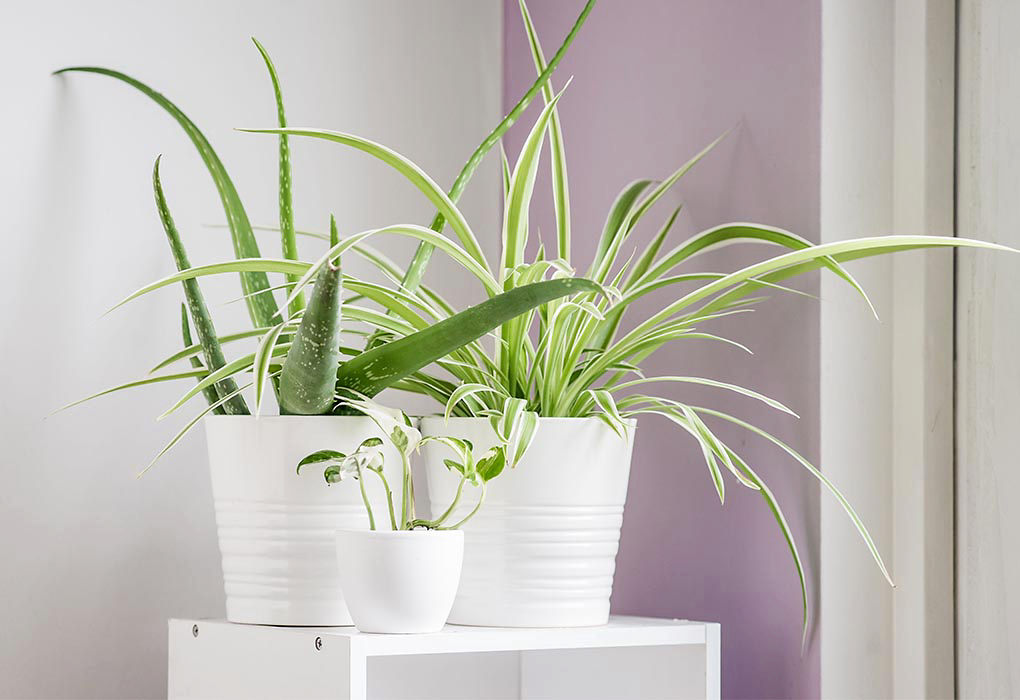

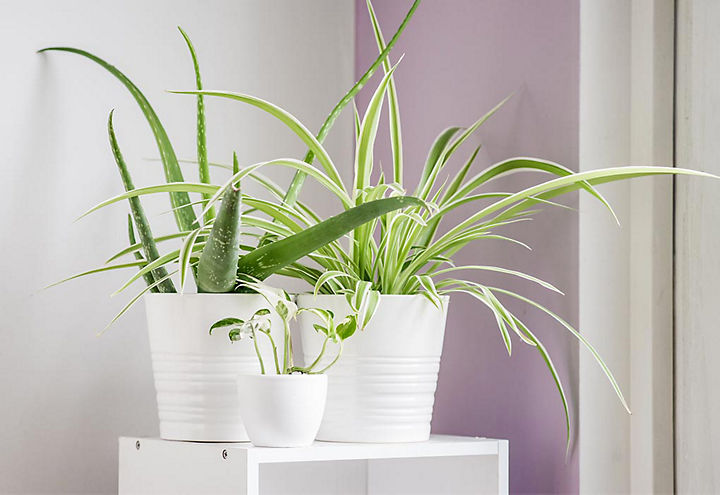
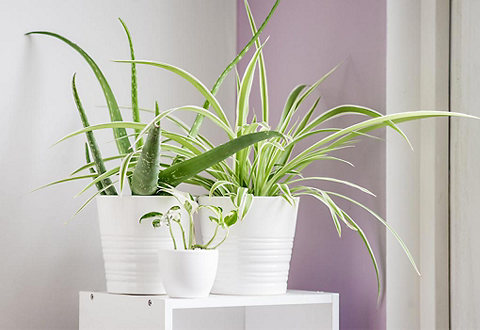
You can help houseplants thrive by following a few easy pointers.
The larger the leaves and flowers, the more water a plant will usually need. Surprisingly, they all need different amounts of water, so always read (and keep) the plant label when you buy.
Bear in mind that watering amounts also vary depending on the season: cut back watering by half during the winter, when growth slows right down or stops. Rather than water from above it is better to place the plant in a shallow tray of water for half an hour or so and allow the compost to draw up the moisture it needs (but don’t leave the pot permanently standing in water).
As with outdoor plants, a thorough soaking once in a while is often better than a regular dribble. To avoid overwatering, wait until the compost is nearly dry; it will turn a lighter brown as it dries out. Try not to wet the leaves of furry-leaved plants or succulents such as cacti because this will encourage rot.
A small-sized can, with a long, slender spout, is ideal for watering indoors. Store this near your plants and you are much less likely to forget to water.
Wherever possible, water with collected rainwater; leave it to stand in the room for an hour or two to bring it up to room temperature.
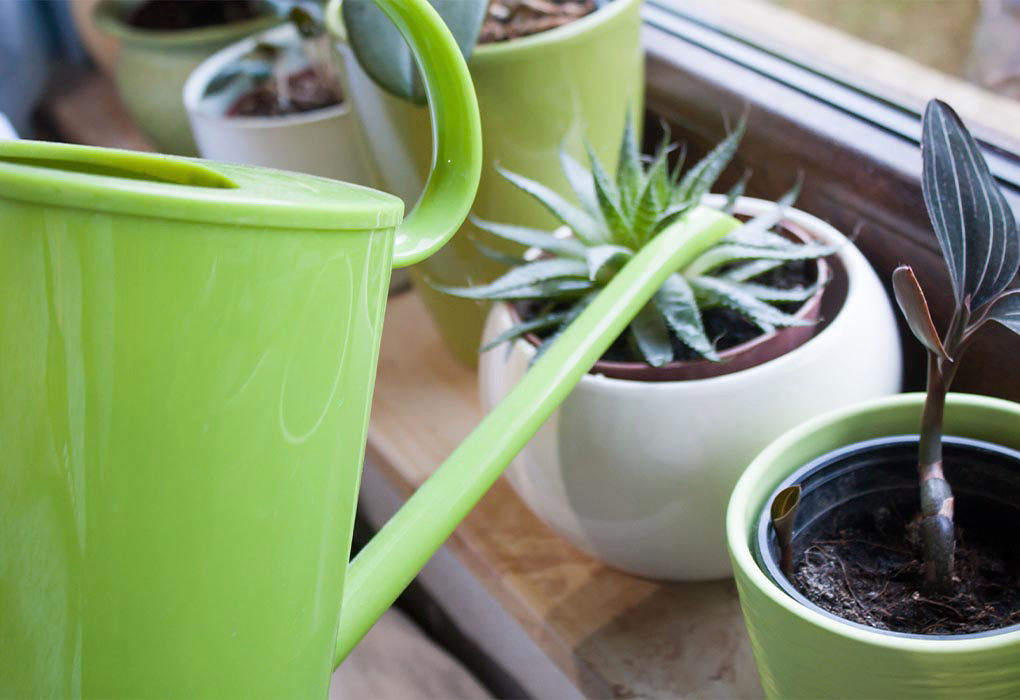

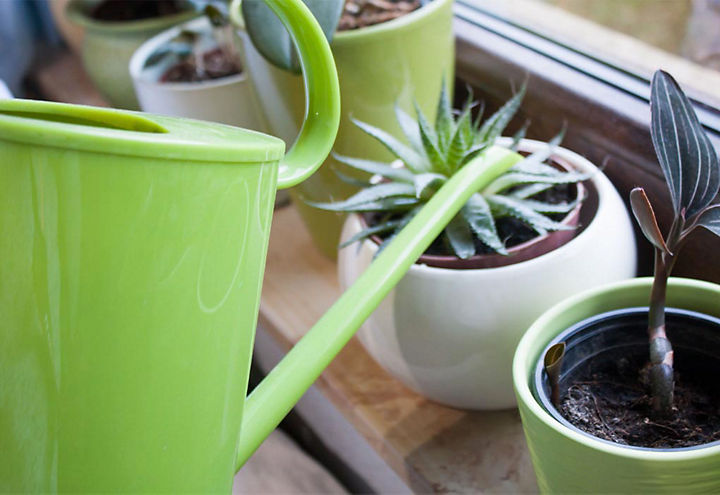
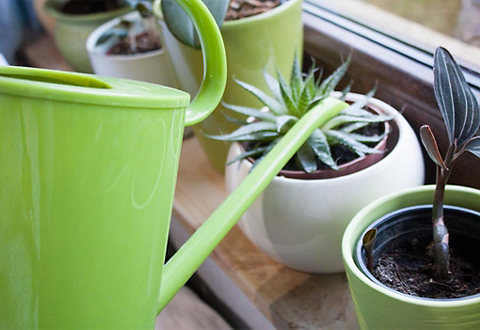
Houseplant drip irrigation
If you’re planning a holiday, look after your plants by adding a water dripper to your indoor plants. The drippers don’t need to be connected to the mains or a tap. Instead, a plastic bottle filled with water is used as a reservoir. A dripper spike and nozzle is added (rated at either 10cl or 15cl per day), allowing you to adjust the water release for up to 20 days. Great for houseplants and office plants too.
Feeding
Liquid feed will provide a quick pick-me-up but will need repeat applications throughout the growing season; an easier option is to use slow-release fertiliser sticks pushed into the compost. Specially formulated houseplant fertiliser should always be used rather than a general garden fertiliser. Special formulas with high nitrogen content are available for foliage plants.
Feeding should begin in the spring and continue through the summer months before cutting down to allow for the plant’s natural slowdown in growth over the winter. Don’t forget to refer to the plant label for specific feed and watering instructions.
Many large-leaved houseplants originate from lush tropical forests, and you will need to reproduce that environment if they are to thrive. The first step is to raise humidity levels around them; placing the plants upon a shallow dish or tray filled with either gravel or clay pebbles and always keeping this moist will be more than adequate.
Occasional misting, particularly for plants such as maidenhair fern and orchids, which love a humid environment, is also vital. Hanging or trailing houseplants that are exposed to drying air from all sides will also benefit from being misted with a hand-held sprayer.
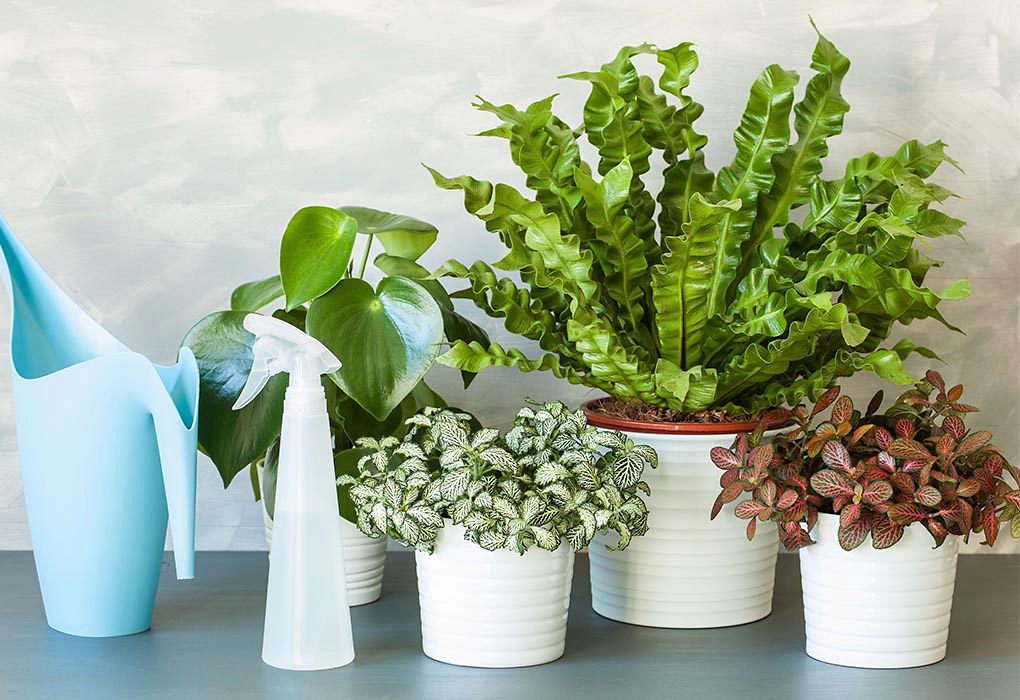

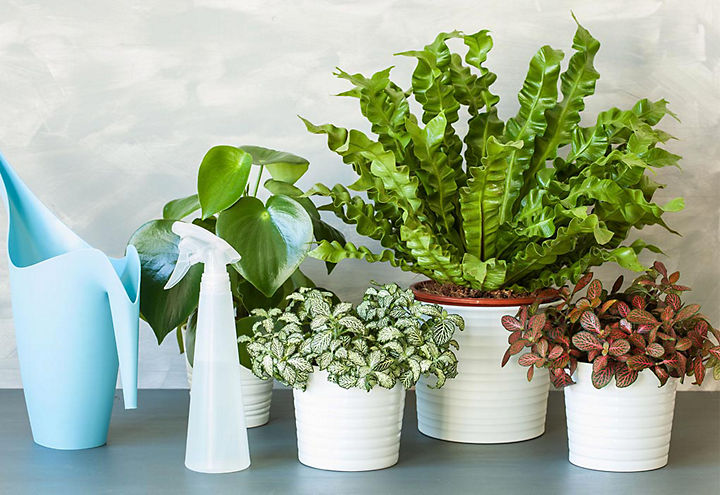
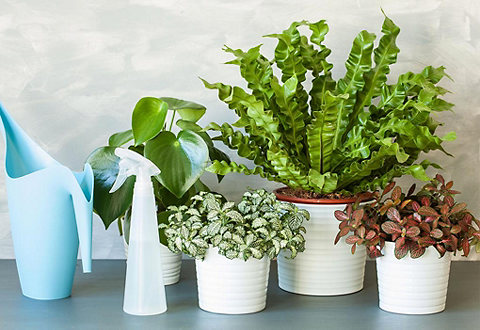
Trimming, cleaning and repotting houseplants
Removing dead leaves and flowers will not only keep your plants looking tidy, but will also help ward off pests and disease. You should also not allow house dust and grime to build up on the leaves, as this will block the tiny pores through which moisture needs to pass. Use a soft brush to dust foliage, or gently wipe big leaves with a damp, lint-free cloth.
To keep the appearance of the leaves looking shiny and healthy you can use specially formulated spray or wipes to remove dust and dirt from the leaves of your houseplants. This helps to eliminate lime stains caused by spraying and prevents dust deposition, without hindering the process of respiration.
Most houseplants will eventually outgrow their pots and will need to be repotted to prevent their roots from becoming constricted and pot-bound. Resist the urge to do this too often though, as this may encourage them to outgrow your home! Always repot in the spring, using a houseplant (not general-purpose) potting compost or specialist mix, and replant into a pot or container that is one or two sizes bigger than the existing one.
For plants that produce offsets – that is, small baby plants that develop around the base of a plant – these can be cut away and planted in a separate pot.
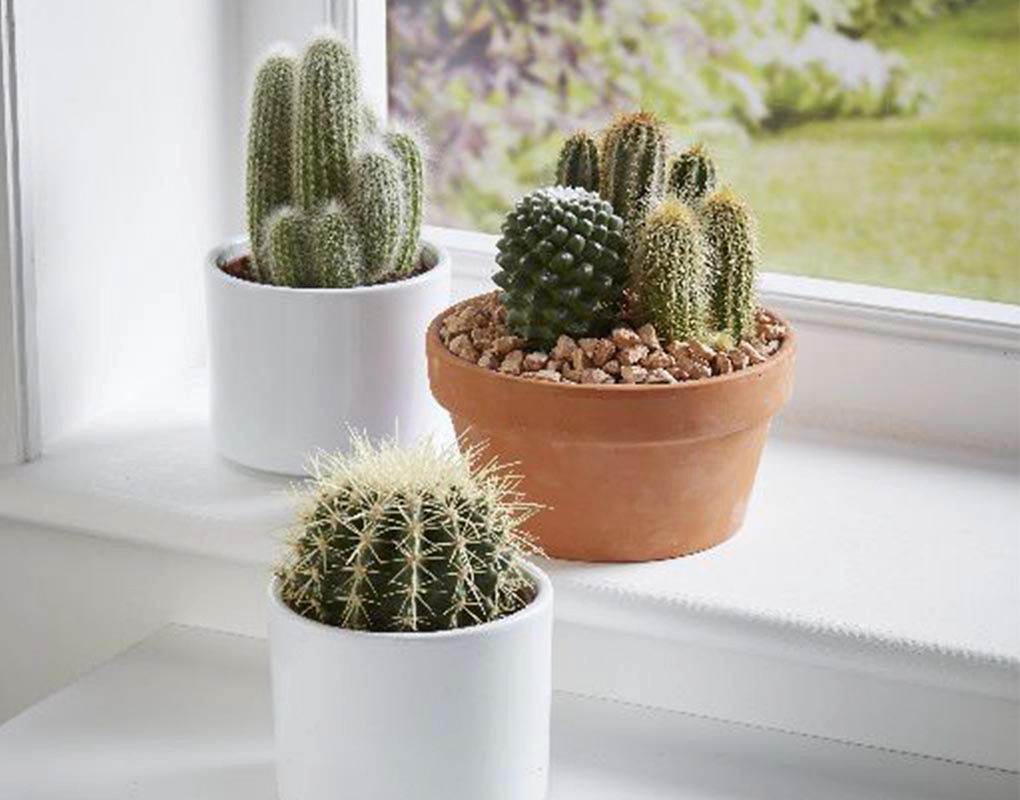

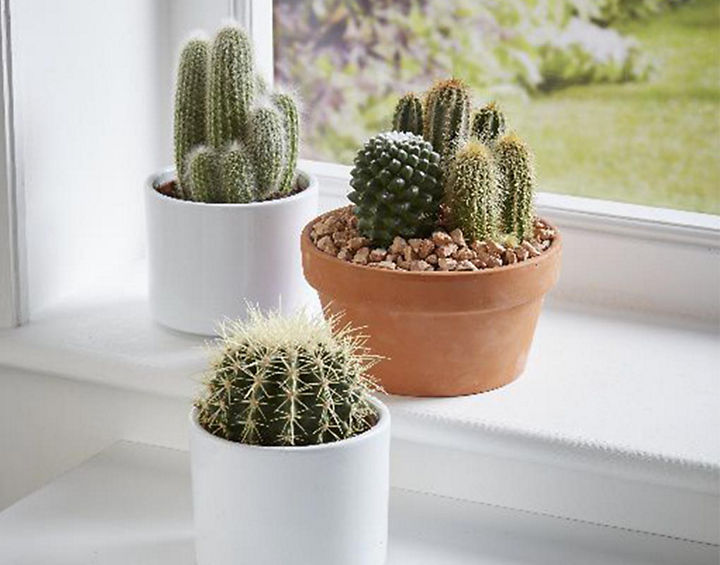
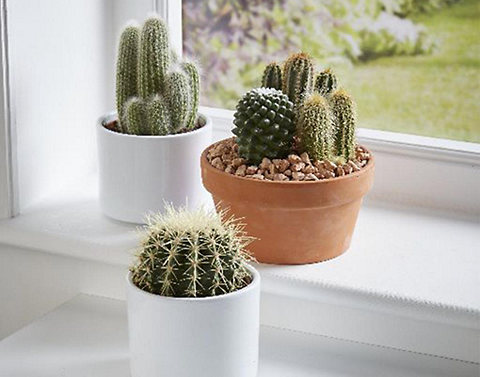
Your houseplants will be fine spending the summer months outside, provided they are in a sheltered spot away from too much direct sunlight. Just remember to bring them inside again before the first frost. It can be a good idea to water in a dose of vine weevil control to prevent these pests infesting the roots.
Other pests including aphids, woolly aphids, scale insects and red spider mite can also attack houseplants, so keep a careful eye on them; you may need to spray them with specially formulated houseplant insecticide if they succumb.
